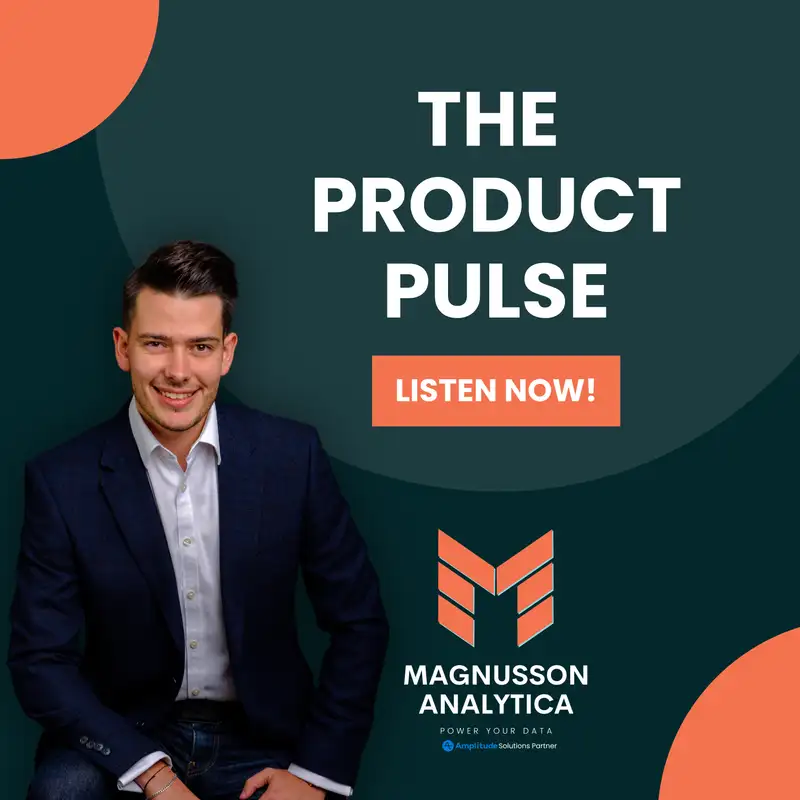Hello, and welcome to the first edition of Amplitude Weekly by Magnuson Analytica. I'm your host, Alex, founder of Magnuson Analytica, and I'm here to keep you up to speed on what's new in product analytics, plus share some tips, insights, and lessons to help you level up your practice without needing to read a stack of blog posts. So let's dive in. First up, some big infrastructure news. Amplitude just announced a new strategic collaboration agreement with AWS.
Speaker 1:The aim, faster analytics, global scale, and stronger reliability, especially for large enterprise teams. It's the kind of foundational change that might not make headlines in the mainstream, but it does hint towards a serious upgrade under the hood. Spencer Skates, Amplitude CEO summed it up this way. This collaboration will provide enterprise customers with the scale and speed they demand for modern analytics. Nate Crook, Amplitude's chief revenue officer, also added that by deepening their collaboration with AWS, they are tapping into their global scale and platform to bring the power of Amplitude to more organizations around the world.
Speaker 1:This is an exciting moment where two data giants are enabling customers to become more data driven through generative AI powered insights, actions, and activation. One real world example, Rappi, a major super app in Latin America, used Amplitude through AWS to increase their first time orders by 10% and cut acquisition costs by 30%, all through better targeting and faster data activation. And speaking of business updates, Amplitude also released their q one earnings this week. With 320,000,000 in annual recurring revenue, a 12% year over year growth, and net revenue retention rate of a 10%, all signs point to steady growth, deeper traction in the enterprise space, and a strategic push into experimentation and customer data platform tools. Even with the deeper traction in the enterprise space, we are also seeing a good uptick in new start ups and mid size accounts due to Amplitude's pricing structure, including scholarships for start ups and plus plans for lower traffic websites and apps.
Speaker 1:Next up are some experimental features that are quietly reshaping Amplitude as a product. We have heard word that Amplitude is developing an agentic AI assistant still in very early alpha. Imagine Amplitude not just as a dashboard you check, but as a proactive teammate watching your metrics, suggesting experiments, even following up for you. Will Newton, who's leading this project, described it like this. Think of it as rewiring amplitude from a tool you use to a team of experts you lead.
Speaker 1:Alongside that, there's also a new error analytics feature now in beta, integrating with auto capture and session replay and already available for web and iOS with Android coming really soon. This means teams can identify bugs and UX issues without needing a separate observability tool, so there's less friction and more insight. Amplitude is also testing out a new approach to onboarding. They've just launched a dedicated Slack channel within the Amplitude community space, which is headed up by Esther and Beth, called the new account help channel, where mentors jump in to support new users and teams as they get started. Here at Magnuson Analytica, we're very proud to be a part of it, being the first featured partner this week, and we've already been working hands on with new customers to build clean taxonomies, tailored dashboards, and smart analytic strategies.
Speaker 1:Honestly, it's been a real pleasure helping those right at the start of their journey. Early wins can really set the tone for long term success. And now it's time for our community spotlight. This week, Yousef Jack Thar asked, is there a way to measure the average number of clicks between two events in Amplitude? Love this question.
Speaker 1:It comes up more than you think, especially when teams are trying to understand user effort or friction in a journey, and it can be adjusted in so many ways. We can see how many clicks it takes to go through a path. We can see how many pages a user views before they convert. Or if you really want a really specific example, we can see how many products a user has to view after opening an ad before they add something to their cart. So here's a quick way we can do it.
Speaker 1:First, head to your funnel chart and add your first event as event a, that first point that you care about. Your second event is the event that you're trying to count. If you have auto capture, this is really easy. It will be your element clicked. In the other examples we mentioned before, it might be your page view or your product view.
Speaker 1:And then finally, your third event will be event b, that conversion that you have. Then change the funnel to measure by frequency, and in the drop down, choose count how many times each user did step two. So that will be your element clicked event. And there you have it. You've now got the number of clicks that users are going through to get from point a to point b as a histogram.
Speaker 1:Want more of these breakdowns? We're sharing tips like this every week at Magnuson Analytica, helping teams build better Amplitude implementations that actually answer business questions. And that's a wrap for this week's Amplitude Weekly, our first ever episode. Whether you're neck deep in dashboards or just thinking about how to scale your analytics practice, I hope this gave you a solid start to the week ahead. If you're new to Amplitude or you just want a second set of eyes, feel free to reach out to us at Magnuson Analytica.
Speaker 1:We're always happy to help. Catch you next week.
